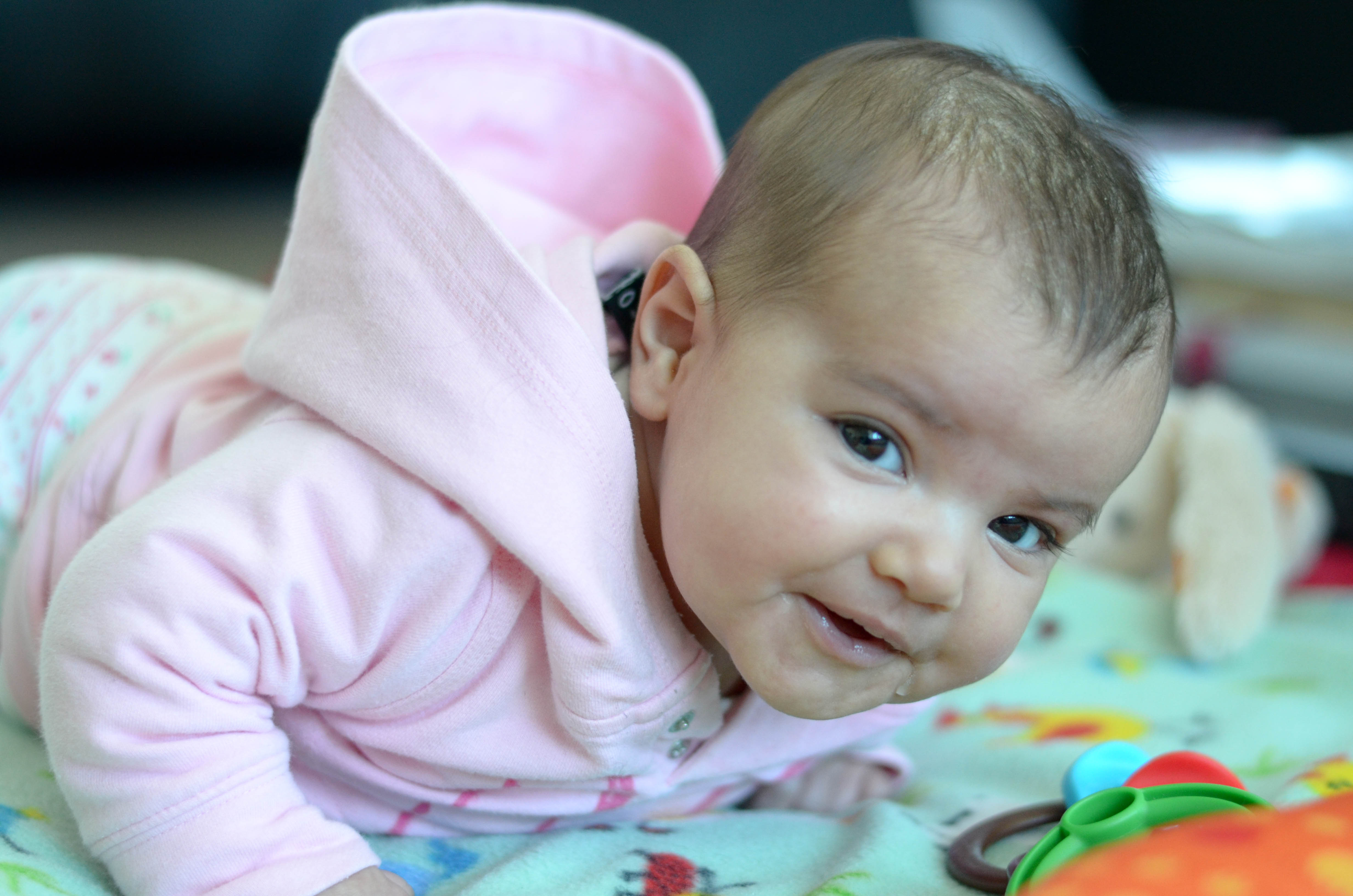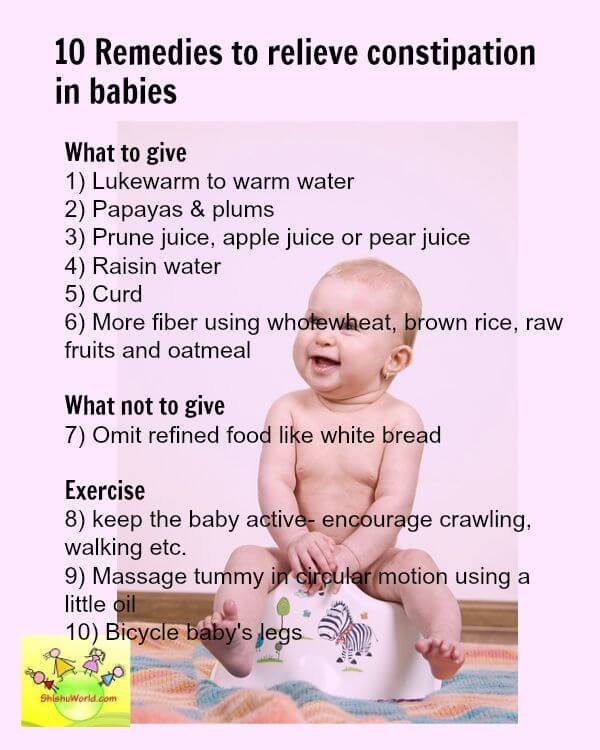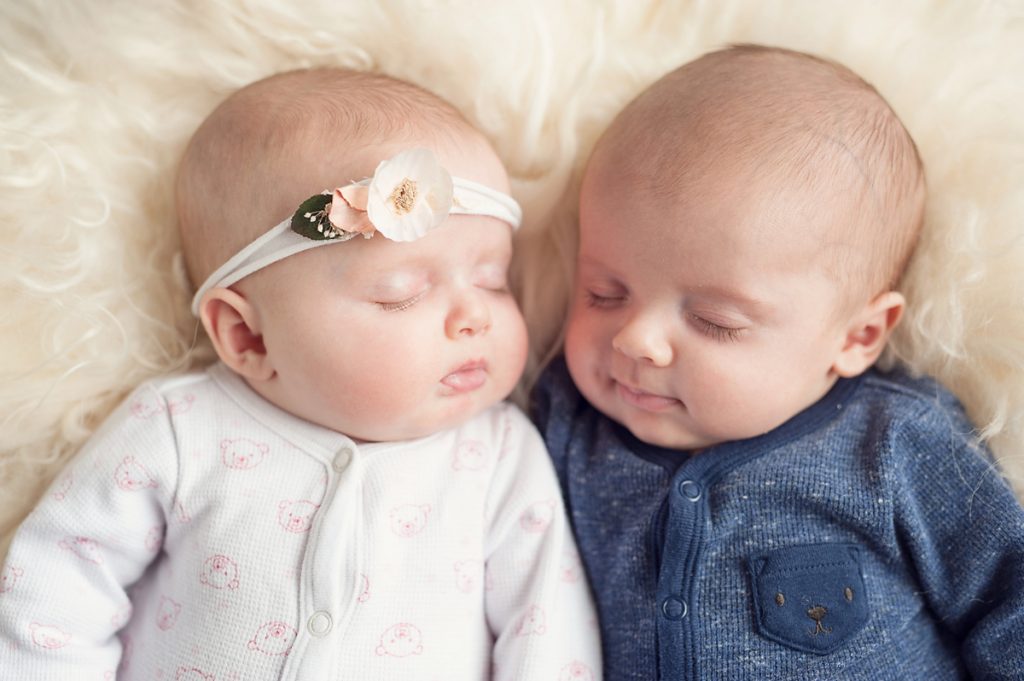3 Month Old Baby

Contents:
- Three Month Old Baby’s Development
- Height and Weight at Three Month Old Baby
- Toys for at 3 Month Old Baby
- Sight at 3 Month Old Baby
- Hearing at 3 Month Old Baby
- Health at 3 Month Old Baby
- Psychology Babies
- Exercises for Three Month Old Babies
- What Should I do If:
Three Month Old Baby’s Development
Lying on the belly, a three-month-old baby leans on the hands and raises not only the head, but also the upper torso. In this position it’s much more convenient to watch around. A three-month-old baby cannot be left unattended even for a minute, as he’s so fast!
Height and Weight at Three Month Old Baby
By the end of the third month, the baby gains from 800 to 900 g. and can grow by about 2.5 cm.
What can do a three-month-old baby:
- recognize a toy hidden for few days by the mom and then again shown to him;
- actively move his arms and legs, watches them;
- almost straighten arms;
- recognize loved ones and acquaintances;
- hold a rattle in the fist and play with it;
- rely on the whole foot when the dad supports him by armpits.
Toys for at 3 Month Old Baby
The main role in the three-month old baby’s development belongs to toys. It’s nice to have a choice of different textures, colors and intended use, for example rattles and cloth dolls easy to grab. The baby starts moving more actively when awake: he can play with hanging toys and the mobile. Very soon he will touch the rattle consciously.
Sight at 3 Month Old Baby
Starting with this month, the baby’s sight has changed – he is able to see things as an adult. If earlier he perceived the world with each eye separately, now his vision becomes binocular. The baby is now able to see the things close: he focuses well and sees objects in details. Moreover, the baby knows that the toy does not disappear, but only hides for a while. Show your baby a toy and then hide it behind the back. The baby realizes that the toy temporarily disappeared from his sight. He pulls his neck and waits for the toy to reappear.
Hearing at 3 Month Old Baby

The baby’s hearing is becoming sharper. Therefore it is necessary to use any ways for its development. Starting with this time, experts recommend to make the baby listen to different music: fast and slow, quiet and moderately loud. To make it fun, clap your hands to the beat of the tunes. Read the baby children's poems – their clear rhythm has a positive effect on the development of hearing.
Sing songs. Hang a bell on baby hand and teach him to ring consciously. This exercise makes the baby get to know his body better and trains hearing. The baby looks for the sound’s source and turn his head in this direction. He already has "favourite" and "unloved" sounds. For example, the baby enjoys hearing his own sounds that are becoming more diverse with each day.
Health at 3 Month Old Baby
Vitamin D, Immunizations, Routine Medical Check-Ups
In order to raise a healthy baby, don't forget about the monthly scheduled visits to the local pediatrician. In three months, you have the following plan:
- Make tests. Before immunization, the doctor will test urine and blood. Iron stores accumulated in the baby’s body before birth are exhausted, so you need to monitor hemoglobin levels.
- Make combined vaccination against diphtheria, tetanus and pertussis (DTP), as well as vaccination against hepatitis B and polio.
- Ensure the prevention of rickets in infants with vitamin D. If you notice signs of rickets in your baby: he sweats more, has receding hair on the back of the head and increased anxiety, he is likely to lack vitamin D. It is a widespread phenomenon in the third-fourth month of life. Tell a pediatrician to pick up a proper medication to treat rickets in the baby and determine the dose and duration of treatment.
Psychology Babies
Psychologists have established an interesting fact: it turns out that there is a relationship whether the mom understands the reason why the baby’s crying and his intellectual development after one year. Of course, in the first two months of life, the baby cries often and it’s hard to determine the reason of such behavior. But a little practice – and you will succeed. By the third month, you have already learned to understand what the baby wants to say. Because crying is primarily a way of communicating. How else a baby can explain that he is hungry or that he is tired of looking at the pink elephant?
If you carefully observe the baby’s mood, you will learn to tell shades of his cry. It can express request, protest, fear. You can hear the “hungry” cry every three hours. At first the sound it becomes clear that the baby wants milk. At the same time, the baby may still ignore wet diapers. Thus, the mom will have to take care of it.
A three-month-old baby often cries when he wants to sleep. He struggles not to close his eyes. This dilemma violates his emotional balance, and … the baby begins to cry. His voice at this time sounds very offended. You shouldn’t ignore the baby’s cry. The baby feels calm is he knows that you can hear and help him. Don't forget that each baby has his own cry intonations. It’s very individual. If the baby calms down in response to your actions – you are doing right!
Exercises for Three Month Old Babies

Walking
Reflexes are actively engaged in exercise for newborns. One of them is an innate ability to "walk". Take baby by armpits and keep him upright, so he almost touches the surface with his feet. The baby will make few steps. If he doesn’t want to “walk”, incline his body slightly forward, thus he’s sure to make a step. Just don't overdo: remember that the baby’s muscles and bones are still very weak.
Hips’ Stretching
Place your baby on the back and bend his knees. Supporting the knee area, gently spread his hips with a semicircular movement.
Crawling
Place your baby on his belly, spread knees out to the sides and bend his legs. Let the baby press his feet against your palms. Pushing off them, the baby will crawl a bit.
What Should I do If:
- The baby has a rash
In most cases, the rash is sweat rash, diaper rash or allergy. It’s quite easy to manage rash in children: change diapers more often, make the baby air baths and exclude allergens. If the baby has abscesses, be sure to consult your doctor.
Pyoderma is usually caused by streptococcus and staphylococci. In newborns, these pathogens cause blistering disease. The appearance of rash is caused by insufficient skin care. Another source of infection are contacts with people having blistering diseases.
Symptoms of blistering disease: neck, armpits, belly and groin of a newborn are covered with small blisters filled with pus and serous fluid; their shell is very thin and easy to break. When they disrupt, infected fluid leaks and infect adjacent skin areas. Usually there is fever, but if the disease is treated properly – all the symptoms go away within 6-8 days.
The disease is highly contagious; it can spread quickly in maternity homes. Be sure to carefully examine your baby’s skin when you bring him home. And if you notice something similar to blisters, immediately tell your doctor. Remember that the best way to avoid the disease is to prevent it. Monitor the baby’s skin condition and your own health to avoid rash.
- A three-month-old baby has convulsions, trembling hands and feet
The baby's nervous system is still under development, sometimes it falls behind the baby’s fast progress. If you notice tremor in your baby’s extremities when he’s trying to stretch himself, it’s unlikely to be dangerous. Soon the baby's movements will become more precise, coordinated, and tremor will go away. But you still can talk with your pediatrician about tremor in your baby if it makes you feel anxious.
Video: 3 Month Old Baby Development.